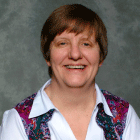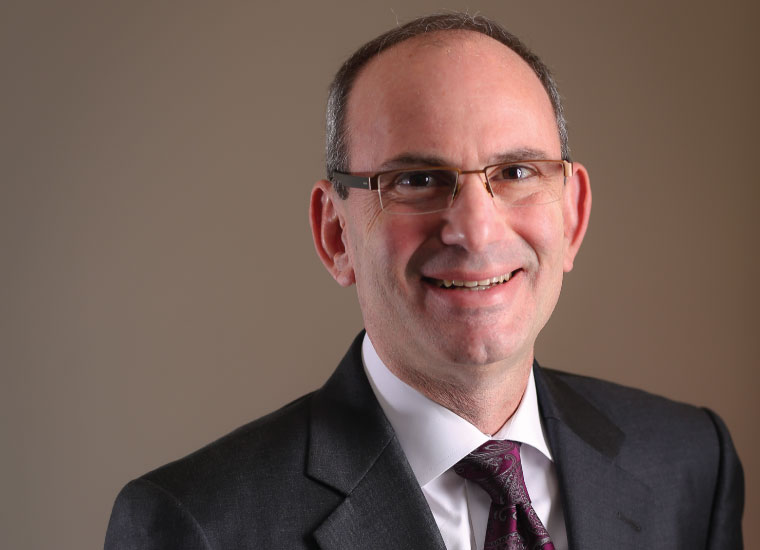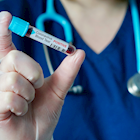“Tell me and I forget. Teach me and I may remember. Involve me and I learn.” –Benjamin Franklin
Nothing replaces the teaching tool of hands-on experience. And, though teaching is certainly different today than 300 years ago when U.S. founding father Benjamin Franklin made his observation, it still holds true.
“Involve me and I learn” is the premise of all simulators – those that teach one to fly an airplane, to drive a car, or even to pitch a baseball. But, none can surpass the training provided by medical simulation with hands-on training for scenarios in health care situations.
At KCU, the human patient simulation and standardized patient program introduces first- and second-year medical students to clinical scenarios.
New simulation technology continues to develop as students increasingly need more sophisticated hands-on training earlier in their medical education. In response to these demands, KCU is building a more expansive, innovative simulation center to train a new generation of physicians.
The new simulation center will replace the current Kesselheim Center for Clinical Competence. According to Diane Karius, PhD, associate professor of physiology and director of Human Patient Simulation, the center will accommodate training for an entire class of 270 students in half the time it currently takes, ultimately allowing more practice time for each student.
 “Hands-on experience in ‘virtual’ medical scenarios brings medical students much closer to achieving success, not only during their third- and fourth-year clerkships, but in their residencies and beyond,” Dr. Karius said. “Before they ever treat a live patient, they will have practiced repeatedly the skills they learn in principles of clinical medicine courses.”
“Hands-on experience in ‘virtual’ medical scenarios brings medical students much closer to achieving success, not only during their third- and fourth-year clerkships, but in their residencies and beyond,” Dr. Karius said. “Before they ever treat a live patient, they will have practiced repeatedly the skills they learn in principles of clinical medicine courses.”
“The needs analysis showed that students need more time in simulations to maintain the best educational experience,” Dr. Karius said. “And that’s what we will be able to deliver with our new simulation center.”
As a third-year medical student who has transitioned from simulated scenarios to real-life clerkships, Brian Geraghty (COM ’18) endorses Dr. Karius’ summation.
“Simulation is invaluable in helping us prepare for a career in osteopathic medicine,” Geraghty said. “A new, advanced 'sim' center will further enhance our ability to develop the communication skills needed to quickly and fully treat our patients.”
In addition to more time and more space, the technology in the simulation center will be state-of-the-art, according to Marc B. Hahn, DO, president and chief executive officer for KCU.
 “Most medical schools already have a simulation center but ours will transcend the norm. It will truly be one of the most progressive and innovative centers in the country,” Dr. Hahn said. “We are incorporating the latest in technology, including virtual reality and haptics, enabling students and community health professionals to develop their skills, greatly reducing risk to patients.”
“Most medical schools already have a simulation center but ours will transcend the norm. It will truly be one of the most progressive and innovative centers in the country,” Dr. Hahn said. “We are incorporating the latest in technology, including virtual reality and haptics, enabling students and community health professionals to develop their skills, greatly reducing risk to patients.”
In October 2016, KCU launched its capital campaign to fund the new Center for Medical and Surgical Simulation. The J.E. and L.E. Mabee Foundation of Tulsa, Okla., issued a $1 million challenge grant. At the time the application was submitted, KCU had raised $3M towards our $7.5M philanthropic goal. The Mabee Foundation makes challenge grants on a conditional basis, requiring KCU to secure philanthropic gifts and pledges for the balance of project funds within one year of the grant award.
In less than six months, KCU has achieved more than 80 percent of that goal, according to Jane Lampo, EdD, vice president for Institutional Advancement.
“Including the grant from the Mabee Foundation, we’ve been able to raise over $5.9 million,” Lampo said. “The outpouring of financial support from our community and alumni has been extremely rewarding. We are so grateful for this generosity, and we hope other alumni will come forward and help us reach our goal.”
Substantial gifts have been received from several Kansas City-based organizations, including J.E. Dunn Construction, the William T. Kemper Foundation, the Sunderland Foundation, and alumni from KCU’s College of Osteopathic Medicine, Dr. Lampo said.
The Kansas City community stands to benefit from the new center. According to Dr. Karius, the new center incorporates a design that will address the training needs for community and regional health care providers.
 “Not only are we building the 'sim' center to allow for a more comprehensive delivery of KCU’s own competency-based curriculum, but this center will accommodate simulation training for a multitude of health care scenarios,” Dr. Karius said. “It is our intent to be accessible for use by a multitude of health care training programs throughout the region, such as emergency responders and continuing education for ancillary providers. This benefits the entire community.”
“Not only are we building the 'sim' center to allow for a more comprehensive delivery of KCU’s own competency-based curriculum, but this center will accommodate simulation training for a multitude of health care scenarios,” Dr. Karius said. “It is our intent to be accessible for use by a multitude of health care training programs throughout the region, such as emergency responders and continuing education for ancillary providers. This benefits the entire community.”
With six months remaining until the October Mabee Challenge deadline, KCU faculty and staff are confident that supporters will step up and meet the goal.
“We’re very excited about the progress being made toward meeting the conditional challenge of the Mabee Grant,” Dr. Lampo said. “We’re closing in on the final $1.6 million to be raised by October 11, 2017. It’s still a lot of money in a relatively short period of time, but we’re so extremely fortunate to have generous donors on our side. I’m confident we’ll get the job done.”




(0) Comments